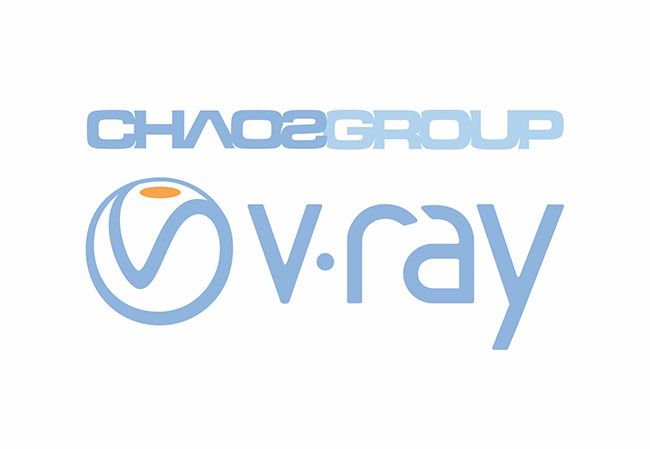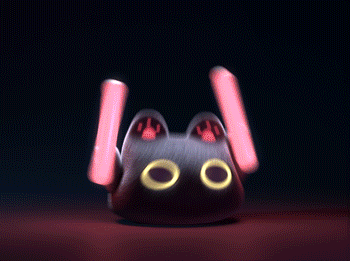The Creation Analysis of A Sci-Fi Scene

The fast cloud rendering services provider and GPU & CPU render farm, Fox Renderfarm will share with you a creation analysis of a sci-fi scene.
Share the creative process of this piece of "Airport". The general idea is that the idea - modeling - lighting - material - rendering - synthesis, this is the production process that everyone is used to. Softwre used: 3ds Max, Zbrush, V-ray.
Scene points:
First of all, these are very important, scene work, especially for large scenes. Several key points are very important. Space, light and shadow, scale, composition, and color are all issues to be considered in large-scale operations. Difficult place. The "space" relationship can be roughly understood as the far and near reality. "Light and shadow" is the most important part of the big scene operation. The reason why the scene is true or not depends on the light and shadow. The "proportion" and "composition" are the framework of the scene. . "Color" is only the color.
1. The idea
The formal process of doing things should be the first-in-the-concept design, and then the production of different precision models in front, middle and far according to the composition.
The idea of this work comes from a CG animation of science fiction. The original idea was to build on the ground and make a block, as shown below:


A large number of abandoned cities and vehicles, the architecture is more traditional, are contemporary architecture, adding some science fiction spaceships, but later found that this atmosphere is not enough. It’s a disaster scene to get rid of the spaceship. So I made changes. The building still retains the contemporary taste, adding more military feelings and some iron shelves, as shown below:

But this work doesn't look like science fiction, so it's all pushed off and new. (However, these pictures are kept as other types of works)
2. Modeling
That is to want a retro, sci-fi feeling, then collect a lot of reference pictures, Transformers, war machines and so on. Later I thought about it. The building does not have to be built on the ground. It can be created directly in the sky with a ship.

The aircraft carrier fits the vintage taste you want. Because this scenario is large, but the total number of models is high, the optimization of the model is crucial.

The model is divided into far, medium, near, and three levels in the scene composition. When doing the model, the different levels of the model have different precision and number of faces.


The aircraft carrier deck is here. It belongs to the level of the medium and long-distance. The model details are relatively simple. Only the accurate proportion and shape can be used. In order to make the smooth flow, it is best not to have too many model objects and perform the same material. The model material is the same as the model. All the models are attached together, and then converted to Eesh, so the smoothness of the operation will be greatly improved.
The aircraft carrier model is finished, because it is not the aircraft carrier to do the sci-fi scene, so only the reference element of the aircraft carrier is used. The lower part of the ship does not need to be done. The deck is ready to start the initial composition, as shown below:

The original composition of the building is too high, there will be a feeling of looking up, in order to highlight the scene, the vision can be expressed, raise the camera, and make it into a slightly overlooked composition.

After the composition is completed, the model begins to expand to the surrounding model based on the aerospace building, and the model of the different levels is also based on the near three scenes.

The aircraft carrier deck is very empty when it is not on the plane, adding rails, train guns, and some racks to make the model richer and fuller. 


In addition to enriching the model of the current main building of the aircraft carrier, the distant model and the phase sequence of the sub-deck model are used to enhance the sense of space and highlight the level. Figure:



As seen in the above figure, the basic main body model architecture has come out, mainly divided into three layers, the number of models near the camera is slightly higher, the farther the model is, the lower the model, and so on.
The final main model is completed, and the most common mistake in large-scenario operations is the random heap model. The model is too dense and has too many details. Therefore, the combination of “whole” and “tight” is especially important, including the character design. Try to use a large overall design to make a piecemeal and intensive design, so that the scene has emotions and will be breathable. (Now many big scenes are all full of details covering the whole picture, or all of them are big details without any details) as shown below:

The main building is completed, the number of faces is already high, and the computer is running very slowly. This is inevitable. The big scene is very demanding on the machine. Therefore, it can only be selected by sub-project files. The works are mainly divided into two project documents. After the main building is finished, it is rendered into a PNG image, or as a proxy object.
Create a new software window, directly render the PNG image, or add it to the new software window by proxy. It is recommended to use the method of rendering the PNG image for reference. Because the number of faces is too high, the proxy mode is easy to report. Figure:

This not only saves the number of faces, but also is very stable, and can also be a good reference for composition. Then we started making the model of the second project file.
The following is intended to be made into a mountain, the building above and below the mountain, the mountain model because it belongs to a far-reaching scene, the requirements are not so high, directly in the PS made a black and white displacement map to replace the general mountain structure, and then enter ZBrush for some subtle Debugging.

The lower-rise buildings are relatively dense and cumbersome. The work of one building and one building is very large, and the number of faces is not well controlled. Some small plug-ins can be used to achieve the desired effect.
The plugins are the same, here are some of the previous tutorials, haha, the same effect. Intensive building with a building cluster plugin, Gerrble.


CUT cut command to cut the new line.

Go to the face object set and select Squeeze.

Complete the above operation and add the building group plugin command.


The building group plug-in can only do some simple building effects and some layouts. It is basically enough in the long-distance scene. After the urban building layout is completed, some whole-piece models are added, and the pavement elements break up the structure.

The substructure is basically completed, you can make some adjustments and add some elements according to your needs, but you must pay attention to the composition, so that the picture is full and not too tight.

Once the model is complete, start testing the lights.
3. Lighting
Because the scene is very large and there are too many models, I have omitted the material step directly. I intend to directly render it into a white mode through channel synthesis and post-overlay. The material representation in this scene is not so important. In the first place. The sci-fi scene is relatively tough, and the light selects the VRay sun light plus the Vrayligh's curved top mode.

The main light source selects VRay sun light, and VRayligh's curved top mode light is used as sky light.
4. The material
After the lighting is debugged, the material is given a material ball. The material is VRaymtl (VR standard material), the color is gray by default, and the inverse color channel is added to the Falloff program. The inverse color is set to 0.6. The attenuation black and white RGB is set to 0.0.0 57.57.57. As shown below:

5. Rendering
The rendering test is shown below, the first is the main building rendering test, and the second is the foreground building rendering test.

Light and shadow projection information effects are quite satisfactory, and relatively realistic.


Rendering testing is a cumbersome process, repeatedly adjusting the position of the light until it is satisfactory (mainly because the rendering speed is too slow, and each test has to wait a long time).
The following is the rendering of some channels, this scene mainly uses reflection, AO, color, Z, these channels. As shown below:



6. Synthesis
Enter the PS for primary synthesis.

Stack the AO and color channels in a superimposed manner, then collapse the layer to enhance contrast.
Find a texture as a whole and add it to the texture.


This way the whole scene has some graininess and basic texture. Then there is the long work of painting textures. In fact, the method is very simple. Just use this image as a UV expansion, and add corresponding textures, pull, match, overlay, and paint on it.

Then add snow, dirty, light and other elements.

Adding the background in the process of adjustment makes the picture more complete. Of course, this is the initial background. Just for a simple look, the final effect still needs to be repeated and the material is finished.

So after the material is finished, enter the final stage of synthesis.
Layer one

Layer two

The third layer is more full of the picture, the story is stronger, and some models of the spacecraft are made. The spacecraft model refers to the spacecraft in the ninth district.

The fourth layer joins the pigeons, the smoke, and the snow fluttering in the sky highlights the atmosphere of the scene.


The final overall color, enhance the light effect, and finish.

Of course, in the process of synthesis, I also tried a combination of various versions, watch the following picture:


Final renderings:

Fox Renderfarm hopes it will be of some help to you. It is well known that Fox Renderfarm is an excellent cloud rendering services provider in the CG world, so if you need to find a render farm, why not try Fox Renderfarm, which is offering a free $25 trial for new users? Thanks for reading!
Author: Zhang Huanhuan
Recommended reading
Top 9 Best And Free Blender Render Farms of 2025
2024-12-30
Revealing the Techniques Behind the Production of Jibaro "Love, Death & Robots", Which Took Two Years to Draw the Storyboard
2025-02-10
Top 10 Free And Best Cloud Rendering Services in 2025
2025-03-03
Top 8 After Effects Render Farm Recommended of 2025
2025-02-10
Top 5 Best and Free 3d Rendering Software 2025
2025-02-10
Shocked! The Secret Behind Using 3D to Make 2D Animation was Revealed!
2025-02-10
How to Render High-quality Images in Blender
2024-12-04
Easy Cel Shading Tutorial for Cartoon in Blender Within 2 Minutes
2025-02-10
Partners
Previous: What is Autodesk Cloud Rendering and How Much it Costs?
Next: 3ds Max Tutorials: Making a Sci-fi Scene in 3ds Max (1)
Interested







